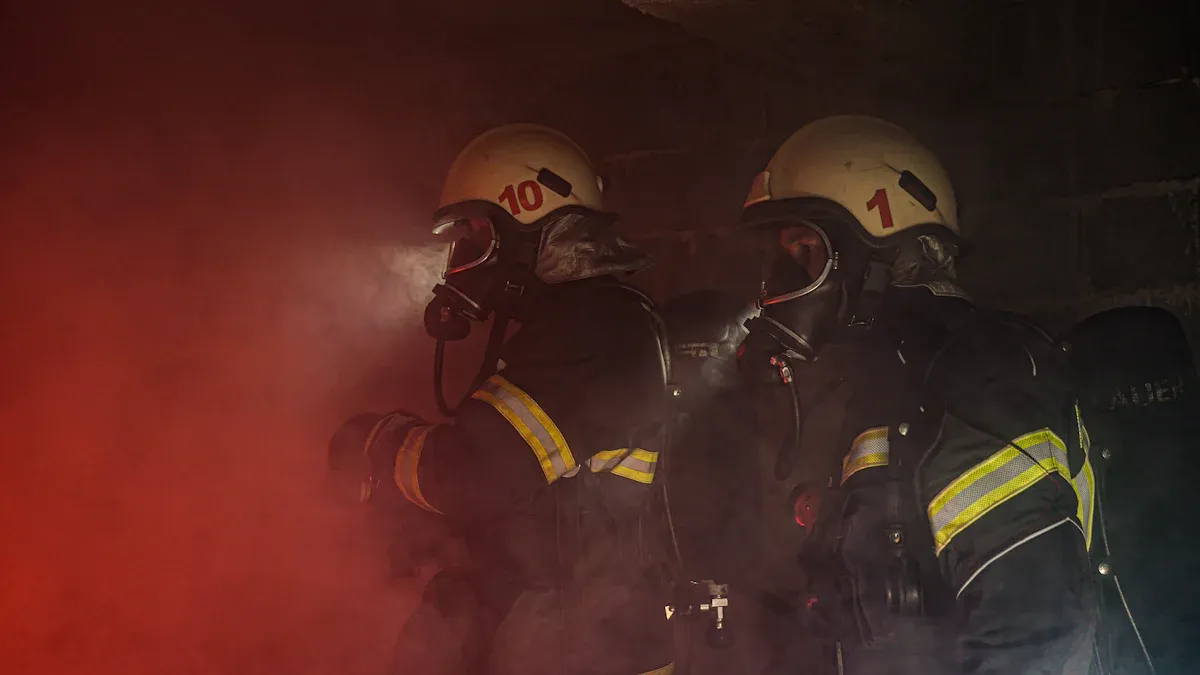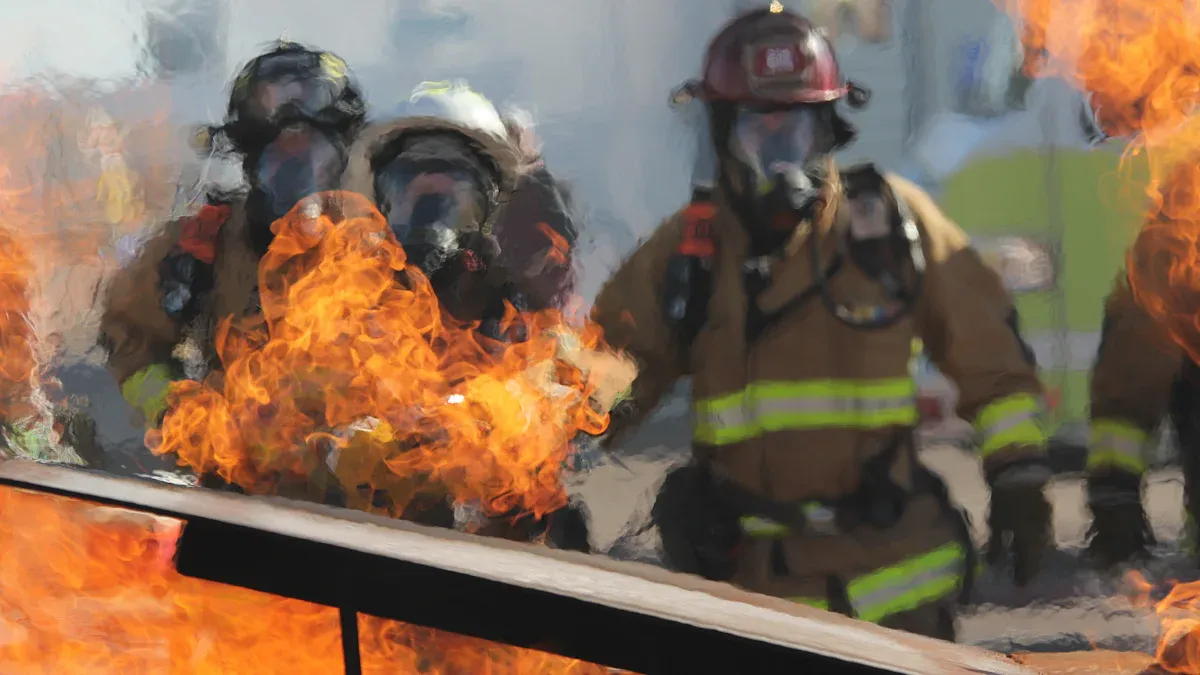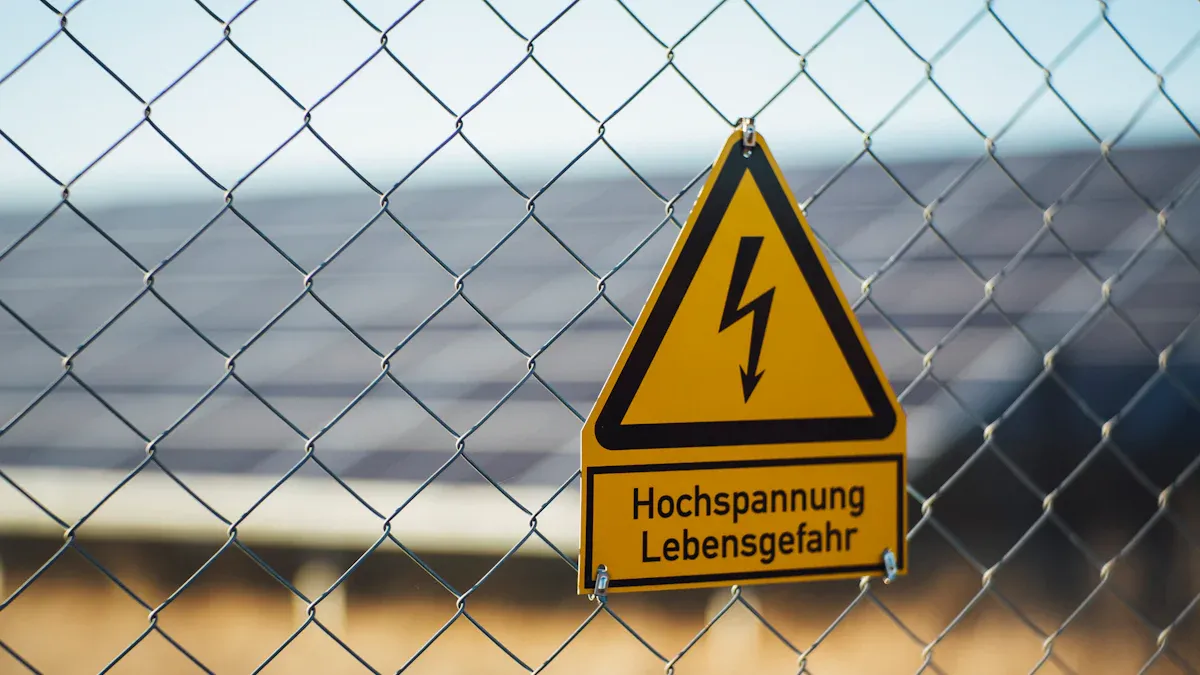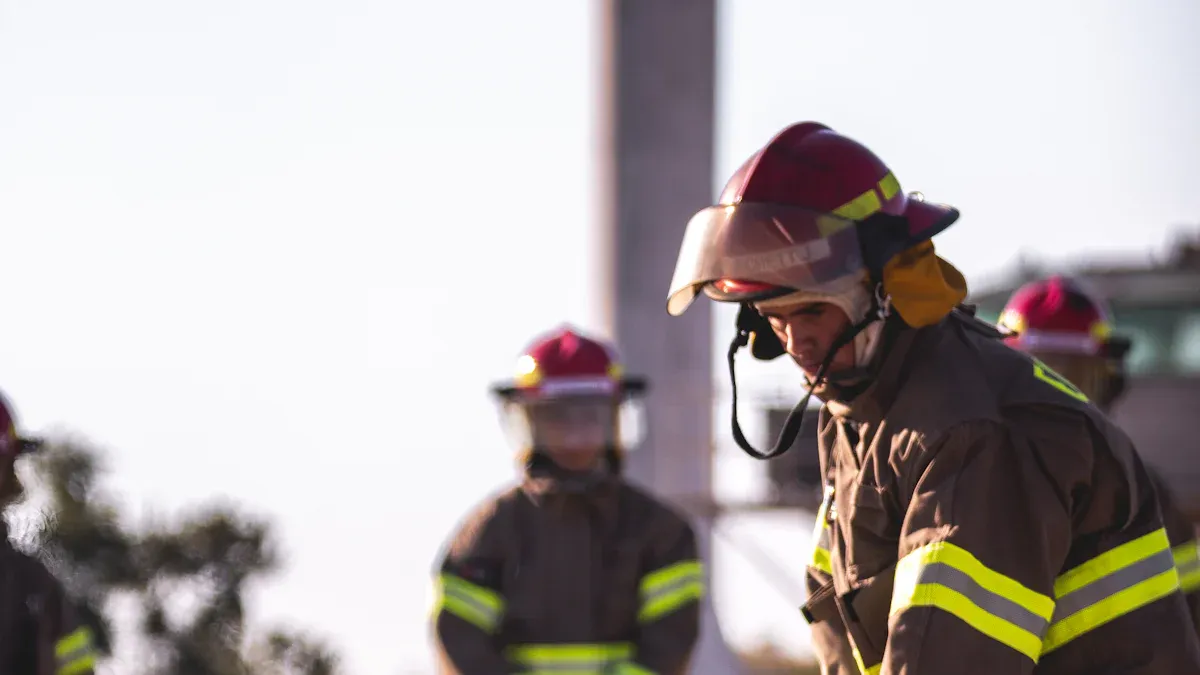
In 2025, firefighting demands precision and reliability. The Screw Landing Valve has emerged as a cornerstone in modern fire protection systems, offering unmatched performance in regulating water flow and pressure to ensure firefighters can respond effectively to emergencies. Description: Oblique Landing Valve is a type of globe pattern hydrant valve. These oblique type landing valves are available with flanged inlet or screwed inlet and are manufactured to comply to BS 5041 Part 1 standard with delivery hose connection and blank cap complying with BS 336:2010 standard. The landing valves are classified under low pressure and are suitable for use at nominal inlet pressure up to 15 bars. The internal casting finishes of every valve is of high quality ensuring a low flow restriction that meets the standard’s water flow test requirement. This innovation has redefined efficiency in both urban and industrial firefighting scenarios, solidifying its role as an essential component in fire protection systems.
Key Takeaways
- Screw landing valves help control water pressure easily for firefighters.
- Firefighters can change water flow rates quickly during emergencies.
- These valves are made of strong brass, so they last long.
- They work well even under high pressure or tough conditions.
- Screw landing valves fit with modern firefighting tools, like smart tech.
- This makes firefighting faster and more effective.
- They save water during firefighting, which is important in cities.
- Cities often have limited water, so saving it is necessary.
- These valves follow global safety rules to ensure they work well.
- This makes them very important for stopping fires safely.
Understanding Screw Landing Valves

What Is a Screw Landing Valve?
I often describe the screw landing valve as the backbone of modern firefighting systems. It is a specialized valve designed to control water flow in fire protection setups. Unlike other valves, it features a screw mechanism that allows precise regulation of water pressure. This makes it indispensable in firefighting scenarios where accuracy and reliability are critical. Its robust construction and compliance with international standards ensure it performs flawlessly under pressure.
Key Features of Screw Landing Valves
The screw landing valve stands out due to its advanced design and technical specifications. Here’s a quick overview of what makes it unique:
| Specification | Details |
|---|---|
| Material | Brass |
| Inlet | 2.5” BSP |
| Outlet | 2.5” BS 336 |
| Working pressure | 16 bar |
| Test pressure | Valve seat test at 16.5 bar, Body test at 22.5 bar |
| Compliance | BS 5041 Part 1 |
| Water flow rate | 8.5 L/S @ 4 Bar outlet pressure |
| Application | Suitable for on-shore and off-shore fire protection applications, installed on wet risers for firefighting. |
These features ensure the valve delivers consistent performance, even in the most demanding environments. Its compatibility with standard firefighting equipment further enhances its versatility.
How Screw Landing Valves Work in Firefighting Systems
When I think about firefighting systems, I see the screw landing valve as a critical component. It connects to wet risers, ensuring a steady water supply during emergencies. The valve’s screw mechanism allows firefighters to adjust water pressure with precision, which is vital for controlling the intensity of the water stream. Its high flow rate of 8.5 liters per second at 4 bar outlet pressure ensures that water reaches the fire quickly and effectively. This efficiency can make a significant difference in life-threatening situations.
The valve’s durable brass construction and rigorous testing standards guarantee reliability. Whether installed on-shore or off-shore, it remains a dependable choice for fire protection systems. Its ability to withstand high pressures and harsh conditions makes it a preferred option for modern firefighting needs.
Benefits of Screw Landing Valves in Firefighting

Precise Water Pressure Control
When I think about firefighting, I understand how crucial water pressure is in extinguishing fires effectively. The screw landing valve excels in providing precise control over water pressure. Its screw mechanism allows firefighters to adjust the flow rate with accuracy, ensuring the right amount of water reaches the fire. This precision minimizes water wastage and enhances the efficiency of firefighting operations. For example, during high-pressure scenarios, the valve ensures that the water pressure remains stable, preventing damage to hoses and other equipment. This level of control can make a significant difference in life-saving situations.
Reliability in Critical Situations
In emergencies, reliability is non-negotiable. The screw landing valve stands out as a dependable component in firefighting systems. Its robust brass construction and compliance with BS 5041 Part 1 standards guarantee consistent performance under extreme conditions. I’ve seen how its ability to withstand pressures up to 15 bars ensures that it functions flawlessly when it matters most. Whether used in urban high-rises or industrial complexes, this valve delivers the reliability firefighters need to tackle fires effectively. Its durability and rigorous testing make it a trusted choice for critical situations.
Note: The valve’s high flow rate of 8.5 liters per second at 4 bar outlet pressure ensures a steady water supply, even in the most demanding environments.
Adaptability to Modern Fire Protection Systems
Modern firefighting systems demand adaptability, and the screw landing valve rises to the challenge. It integrates seamlessly with advanced fire protection setups, including wet risers and hydrant systems. I’ve noticed how its hydraulic control mechanism, featuring a diaphragm, adjusts water pressure based on system requirements. This adaptability ensures that firefighters receive the optimal water pressure for effective operations. Additionally, its design accommodates both on-shore and off-shore applications, making it versatile for various environments. By meeting international standards and handling nominal inlet pressures up to 15 bars, the valve proves its capability to adapt to diverse firefighting needs.
Durability in Harsh Environments
When I evaluate firefighting equipment, durability stands out as a critical factor. Firefighting often occurs in extreme conditions, from scorching heat to freezing temperatures. The screw landing valve excels in these harsh environments, thanks to its high-quality brass construction and meticulous manufacturing process. This robust design ensures the valve can withstand significant wear and tear, maintaining its performance even under the most demanding circumstances.
I’ve observed how the valve’s ability to handle pressures up to 15 bars makes it a reliable choice for both urban and industrial firefighting applications. Its compliance with BS 5041 Part 1 standards further guarantees its resilience. Whether exposed to corrosive elements in off-shore installations or the intense heat of a fire, the valve remains unaffected. This reliability provides firefighters with the confidence they need during critical operations.
Another aspect I appreciate is the valve’s resistance to internal damage. The smooth internal casting minimizes flow restrictions, reducing the risk of wear over time. This feature not only enhances its efficiency but also extends its lifespan. I’ve seen how this durability translates to reduced maintenance costs and fewer replacements, making it a cost-effective solution for fire protection systems.
In my experience, the screw landing valve’s durability is unmatched. It performs consistently in challenging environments, ensuring that firefighters can rely on it when it matters most. This resilience solidifies its position as an indispensable component in modern firefighting systems.
Comparing Screw Landing Valves to Other Valve Types

Screw Landing Valves vs. Gate Valves
When I compare screw landing valves to gate valves, the differences become clear. Gate valves operate by lifting a gate to allow water flow, making them suitable for fully open or closed positions. However, they lack the precision needed for firefighting. Screw landing valves, on the other hand, excel in controlling water pressure with accuracy. Their screw mechanism allows firefighters to adjust the flow rate to match the situation. This precision ensures efficient water usage during emergencies.
Another key distinction lies in durability. Gate valves often struggle in high-pressure environments due to their design. Screw landing valves, with their robust brass construction, withstand pressures up to 15 bars. This makes them a more reliable choice for firefighting systems, especially in critical situations.
Screw Landing Valves vs. Ball Valves
Ball valves use a rotating ball with a hole to control water flow. While they are effective for quick shut-off, they lack the fine-tuned control offered by screw landing valves. In firefighting, I’ve seen how the ability to regulate water pressure can make a significant difference. Screw landing valves provide this advantage, ensuring that firefighters can adapt to varying fire intensities.
Durability also sets these two apart. Ball valves, often made from lighter materials, may not endure the harsh conditions of firefighting. Screw landing valves, crafted from high-quality brass, perform reliably in extreme environments. Their compliance with international standards further reinforces their suitability for fire protection systems.
Why Screw Landing Valves Are Ideal for Firefighting
In my experience, screw landing valves stand out as the ideal choice for firefighting. Their precise water pressure control, robust construction, and adaptability to modern systems make them indispensable. Unlike other valve types, they integrate seamlessly with advanced firefighting setups, ensuring optimal performance. Their ability to handle high pressures and harsh conditions provides firefighters with the confidence they need during emergencies.
The screw landing valve’s design prioritizes efficiency and reliability. Its compatibility with standard firefighting equipment and compliance with BS 5041 Part 1 standards highlight its superior quality. Whether used in urban or industrial settings, it consistently delivers the performance required to tackle fires effectively.
The Role of Screw Landing Valves in 2025

Integration with Smart Firefighting Technologies
In 2025, firefighting has embraced smart technologies, and I’ve seen how the screw landing valve integrates seamlessly into these advanced systems. Modern firefighting setups often include IoT-enabled sensors and automated controls. These technologies rely on components that can deliver precision and reliability, and the screw landing valve fits perfectly into this framework. Its ability to regulate water flow and pressure ensures that smart systems can optimize water delivery based on real-time data. For instance, during a fire, sensors can detect the intensity and location of the flames, and the valve adjusts the water pressure accordingly. This level of integration enhances firefighting efficiency and reduces response times.
Additionally, the valve’s robust construction and compliance with international standards make it a dependable choice for automated systems. I’ve noticed how its compatibility with both traditional and modern equipment ensures a smooth transition for fire departments upgrading their infrastructure. This adaptability positions the screw landing valve as a key player in the era of smart firefighting.
Addressing Urban and Industrial Firefighting Needs
Urban and industrial environments present unique challenges for firefighting. High-rise buildings, sprawling factories, and densely populated areas demand equipment that can perform under diverse conditions. The screw landing valve excels in these scenarios. Its ability to handle pressures up to 15 bars ensures it can deliver water to the upper floors of skyscrapers or across large industrial complexes. I’ve observed how its precise pressure control minimizes water wastage, which is crucial in urban settings where water resources may be limited.
In industrial environments, the valve’s durability stands out. Harsh conditions, such as exposure to chemicals or extreme temperatures, require components that can withstand wear and tear. The screw landing valve’s brass construction and meticulous manufacturing process make it a reliable choice for these demanding applications. Whether it’s extinguishing a fire in a factory or a residential building, this valve consistently delivers the performance firefighters need.
Advancing Fire Protection Standards
Meeting modern fire protection standards requires equipment that prioritizes safety, reliability, and efficiency. The screw landing valve plays a pivotal role in achieving these goals. Its design ensures appropriate water pressure for effective firefighting, while its compliance with BS 5041 Part 1 standards guarantees safety and reliability. I’ve seen how its ability to regulate water flow and pressure contributes to meeting or even exceeding these standards.
- Regulates water flow and pressure with precision.
- Ensures appropriate water pressure for effective firefighting.
- Provides safety and reliability in fire protection systems.
These features not only enhance firefighting efficiency but also set a benchmark for other components in fire protection systems. By incorporating the screw landing valve, fire departments can ensure their equipment aligns with the highest standards, offering peace of mind during critical operations.
I firmly believe the screw landing valve has become an indispensable tool in modern firefighting. Its ability to regulate water flow and pressure ensures firefighters receive the precise water supply needed to combat fires effectively. This reliability allows them to focus on their mission with confidence in their equipment. As fire protection systems evolve, the screw landing valve will remain a cornerstone, offering unmatched precision, adaptability, and durability. Its role in advancing firefighting efficiency highlights its importance in safeguarding lives and property.
FAQ

What makes the Screw Landing Valve different from other firefighting valves?
The Screw Landing Valve stands out due to its precise water pressure control, robust brass construction, and compliance with BS 5041 Part 1 standards. Its screw mechanism ensures firefighters can adjust water flow accurately, making it ideal for critical firefighting scenarios.
Can the Screw Landing Valve handle extreme conditions?
Yes, it can. Its high-quality brass construction and meticulous manufacturing process allow it to withstand pressures up to 15 bars and harsh environments. Whether in urban high-rises or off-shore installations, it performs reliably under extreme conditions.
Is the Screw Landing Valve compatible with modern firefighting systems?
Absolutely. The valve integrates seamlessly with advanced fire protection setups, including wet risers and hydrant systems. Its design accommodates both traditional and IoT-enabled systems, ensuring adaptability to modern firefighting technologies.
How does the Screw Landing Valve enhance firefighting efficiency?
Its precise pressure control minimizes water wastage and ensures optimal water delivery. With a flow rate of 8.5 liters per second at 4 bar outlet pressure, it provides firefighters with the necessary water supply to combat fires effectively.
Where can the Screw Landing Valve be installed?
The valve is suitable for both on-shore and off-shore applications. It is typically installed on wet risers in fire hydrant systems, ensuring a steady water supply for firefighting efforts in residential, industrial, and commercial settings.
Post time: Feb-24-2025

